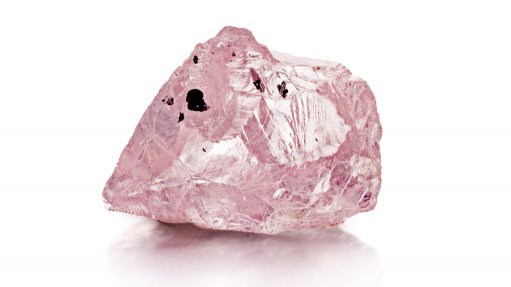
JOHANNESBURG (miningweekly.com) – Petra Diamonds has recovered a 23.16 ct pink diamond of “exceptional colour and clarity” from its Williamson mine, in Tanzania.
The company said in a statement that the diamond was an example of the high-quality pink diamonds for which the mine was known and was the most significant recovery by Petra from the mine to date.
Pink diamonds were only found in a handful of mines throughout the world and their rarity ensured that they were highly coveted.
The pink colour in diamonds was thought to be brought about by an alteration to the diamond’s molecular structure, possibly caused by some kind of seismic shock at the time of the its formation.
Scientists speculate that this led to an atomic-level lattice defect that could selectively absorb light in the visible region of the spectrum. This colour centre was often concentrated in parallel planes within an otherwise nearly colourless diamond. More scientific investigation was currently under way into how pink diamonds obtain their colour.
The diamond would be offered for sale by appointment in Antwerp as part of Petra’s December tender process.
Located in the Shinyanga province in Tanzania, the Williamson openpit operation was located in the 146 ha Mwadui kimberlite pipe.
Despite having been in continuous operation since 1940, the pit was only 95 m at its deepest point, owing to the significant size of the deposit.
Williamson produced high-quality diamonds, as evidenced by the average value of $298/ct in the past financial year.
The 54 ct ‘Williamson Pink’, which was considered to be one of the finest pink diamonds ever recovered, was found at Williamson in October 1947.
The mine, then owned by Canadian geologist and royalist Dr John Williamson, gave the diamond to Princess Elizabeth as a wedding present in 1947. It was cut into a 23 ct round brilliant and set as the centre of a brooch in the form of a jonquil flower, designed and set by Cartier in 1953.